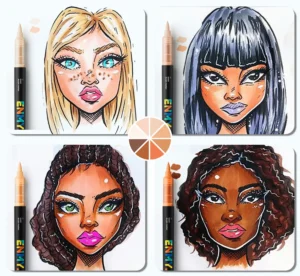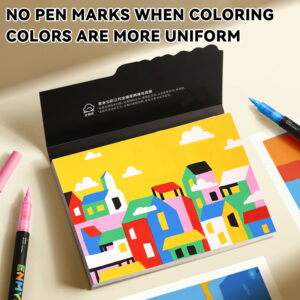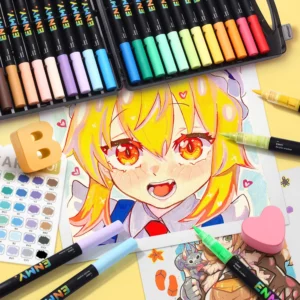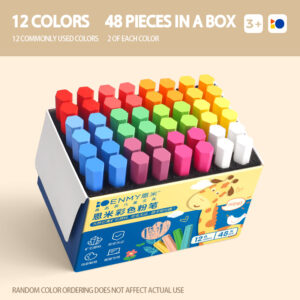Painting, one of the oldest and most expressive art forms of humanity, is like a magnificent and colorful grand garden, with each corner exuding a unique charm. From the simple yet mysterious rock paintings on cave walls in ancient times to the stunning avant-garde works in modern art exhibitions, painting has always accompanied the development of human civilization, recording the vicissitudes of the times and the emotions deep within the human heart.

The Origin and Development of Painting
The origin of painting can be traced back to the Paleolithic Age tens of thousands of years ago. At that time, in order to record their lives, express their beliefs, or pray for successful hunts, humans used simple tools to depict images of animals, people, and hunting scenes on the stone walls of caves. Although the techniques of these early paintings were rough, they were full of primitive vitality and imagination, becoming precious legacies in the history of human art.
As time went by, painting gradually developed and evolved in different regions and cultures, forming various distinctive styles and schools. In ancient Egypt, painting was widely used for the decoration of tombs and temples. Its style was solemn and rigorous, and the depiction of human figures mostly adopted the frontal law, with strong stylized characteristics. During the ancient Greek and Roman periods, the art of painting reached a new height. Artists focused on the study of human body structure and dynamics, pursuing realistic and idealized expressions, laying a solid foundation for the development of Western painting.
In the East, Chinese painting stands out with its unique charm of brushwork and profound cultural connotations. From the early oracle bone inscriptions and bronze inscriptions to later silk paintings and murals, Chinese painting has gone through a long development process, forming various techniques and styles such as meticulous brushwork, freehand brushwork, and ink wash painting. Chinese painting emphasizes the creation of artistic conception, focuses on the expression of the painter’s subjective emotions, and pursues the artistic realm of “harmony between man and nature.” Japanese painting, on the basis of absorbing the art of Chinese painting, combined with the cultural characteristics of its own country, developed unique painting forms such as ukiyo-e.
Introduction to Common Painting Types
Sketch: The Cornerstone of Painting
Sketch is a painting form that mainly uses lines and shading as means of expression. It is usually created on paper using tools such as pencils, charcoal pencils, and pens. It is the foundation of painting. By depicting the shape, structure, proportion, and light and shadow of objects, it helps artists master basic modeling abilities. Sketch works often present in simple black, white, and gray tones, but they can show rich layers and three-dimensional effects, with a unique artistic charm.
In sketch, lines are the most basic elements of expression. Artists use lines of different weights, densities, and lengths to outline the contours of objects and express their structures and textures. For example, delicate lines can depict the smoothness of human skin, while thick and heavy lines can show the roughness of rocks. The relationship between light and shade is also crucial in sketch. By depicting the light – receiving surface, back – light surface, and projection of an object under light, a realistic three-dimensional and spatial effect is created.
Watercolor Painting: The Blending of Water and Color
Watercolor painting is a type of painting created by mixing transparent pigments with water. Its most prominent feature is the transparency of the pigments and the fluidity of water, which makes the paintings present a fresh, bright, and moist effect. Watercolor painting is suitable for depicting natural scenery, flowers, figures, and other subjects. Painters can use the mutual blending of water and color to create rich color layers and unique texture effects.
In watercolor painting creation, the control of water content is of vital importance. Excessive water will make the colors too thin and difficult to control the painting; while too little water will cause the colors to be dry and hard, failing to achieve the desired effect. Painters need to flexibly use dry and wet painting techniques according to the needs of the painting. The dry painting method involves layering colors on dry paper, making the colors richer and deeper; the wet painting method is carried out on wet paper, allowing the colors to flow and blend naturally, creating a soft and hazy effect. In addition, watercolor painting often uses the technique of leaving white space to represent highlights and reflections, making the painting more vivid and bright.
Oil Painting: A Feast of Colors
Oil painting is a painting form that uses oil – based pigments to create on materials such as canvas and wooden boards. It has the characteristics of rich colors, strong expressiveness, and good covering power. It can delicately depict the shape, texture, and light and shadow changes of objects. Oil painting has a long history. Since it emerged in Europe in the 15th century, it has gradually become one of the main forms of Western painting and has had a profound impact on the development of world painting art.
The texture of oil paint is relatively thick, and various effects can be achieved through techniques such as thick painting, thin painting, rubbing, and scraping. The thick painting method can give the painting a strong texture and three-dimensional effect, while the thin painting method can create a soft and transparent atmosphere. Oil painting can also express emotions and artistic conceptions through the ingenious use of colors. For example, warm colors often bring a sense of warmth and enthusiasm, while cool colors convey a sense of calmness and depth. Many famous oil paintings, such as Mona Lisa by Leonardo da Vinci and Sunflowers by Vincent van Gogh, have become classics in art history with their unique colors and exquisite techniques.
Chinese Traditional Painting: The Poetry of Brush and Ink
Chinese traditional painting, or “Guohua,” has a long history and profound cultural heritage. It mainly uses writing brushes, rice paper, ink, and pigments as tools and materials, and expresses the painter’s thoughts, emotions, and aesthetic pursuits through the use of brush and ink. Chinese traditional painting is divided into two major types: meticulous painting and freehand painting. Meticulous painting focuses on fine lines and bright colors, showing the shape and details of objects through delicate depiction; freehand painting emphasizes the charm of brush and ink and the creation of artistic conception, expressing the painter’s feelings with simple and bold brushstrokes.
In Chinese traditional painting, brush and ink are not only means of expression but also the embodiment of the painter’s spiritual temperament. The softness of the writing brush allows for rich changes in lines. Painters can use different brushwork techniques such as lifting, pressing, lightness, heaviness, slowness, and rapidity to express the texture and dynamics of objects. The penetration and smudging effects of ink on rice paper add a unique charm to the painting. In addition, Chinese traditional painting often incorporates elements such as poetry, calligraphy, and seals, forming an artistic feature of integrating poetry, calligraphy, painting, and seal, endowing the works with higher cultural connotations and artistic values.
Printmaking: The Combination of Replication and Creation
Printmaking is a painting form completed through plate – making and printing. It can be divided into several types such as relief, intaglio, planographic, and stencil, and each type has its own unique production methods and artistic effects. The production process of printmaking requires several links, including drawing the draft, making the plate, and printing. During the plate – making process, artists transform their creative intentions into marks on the plate through the treatment of plate materials, such as carving, etching, and photosensitization. Then, the images on the plate are replicated onto paper or other materials through printing.
Printmaking has a unique artistic charm, and its images often have a strong sense of line and unique texture effects. Since printmaking can be replicated through printing, it has great advantages in disseminating artworks. Many artists have used this characteristic of printmaking to create a large number of excellent works, enabling more people to appreciate the charm of art. At the same time, the creative process of printmaking also provides more room for exploration and innovation for artists. They can try various techniques and materials during the plate – making and printing processes to create unique artistic effects.
Cartoon: The Art of Exaggeration and Humor
Cartoon is a painting form that uses techniques such as exaggeration, deformation, and humor to express themes. It usually has simple and clear images and vivid and interesting plots, which can quickly attract the audience’s attention and convey the author’s thoughts and emotions. There are various forms of cartoons, including single – panel cartoons, multi – panel cartoons, and comic strips, which are widely used in various media platforms such as newspapers, magazines, books, and the Internet.
The characteristic of cartoons lies in their unique means of expression. By exaggerating the images, actions, and expressions of characters, cartoons can enhance the expressiveness and appeal of the images, giving the audience a strong visual impact and emotional resonance. At the same time, cartoons often use humorous and satirical techniques to reflect social reality and express the author’s views, with a certain degree of ideological and critical nature. In addition, cartoons also have strong entertainment value, providing people with a relaxed and pleasant reading experience. Many classic cartoon works, such as Havoc in Heaven, Astro Boy, and Doraemon, are not only popular in China but also have had a profound impact internationally.
How to Choose the Right Painting Type for Yourself
Faced with such a rich variety of painting types, many people may feel confused and not know how to choose the painting type that suits them. In fact, the choice of painting type mainly depends on personal interests, aesthetic preferences, and the emotions one wants to express. If you like to depict objects delicately and realistically and have a keen observation of light and shadow and color changes, then oil painting or watercolor painting may be more suitable for you; if you are fond of simple lines and the unique charm of brush and ink and pursue the creation of artistic conception, then Chinese traditional painting or sketch may be more to your taste; if you are imaginative and like to express your ideas in an exaggerated and humorous way, then cartoons may be your best choice; and if you are interested in printing techniques and unique texture effects and want to try a different way of creation, then printmaking may bring you unexpected surprises.
In addition, you can also discover your interests by trying different painting types. During the process of trying, don’t pay too much attention to the quality and result of the works. What’s important is to enjoy the process of painting and feel the fun and challenges brought by different painting types. At the same time, you can also appreciate more works of different painting types, understand various painting styles and techniques, and gain inspiration from them.
Painting is an endless art treasure trove, and each painting type has its own unique charm and value. Whether it is the simplicity of sketch, the freshness of watercolor painting, the splendor of oil painting, the elegance of Chinese traditional painting, the uniqueness of printmaking, or the fun of cartoons, they can all bring us aesthetic enjoyment and touch our hearts. It is hoped that through the introduction in this article, you can have a deeper understanding of different types of painting, find your own painting field, and embark on a wonderful artistic journey. In the world of painting, give full play to your imagination and creativity and use the brush to depict your own magnificent chapter.






